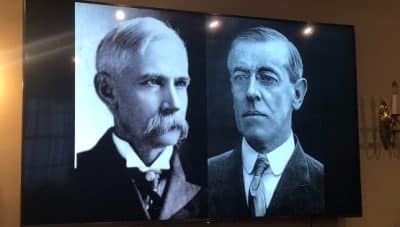
The Lung Association’s annual report card on tobacco control monitors progress on key tobacco control policies at the federal and state levels and assigns grades to assess whether laws are protecting citizens from the terrible health burden caused by tobacco use.
Virginia joins many other states that abdicated their responsibility in 2011 to enact much-needed laws and policies that save lives and reduce tobacco-related disease.
“Virginia collects more than $299 million in tobacco revenues and tough financial times don’t justify a retreat in efforts to fight the leading cause of preventable death,” said Dennis Alexander, Regional Executive Director of the American Lung Association in Virginia. “The American Lung Association and key tobacco control advocates labored in 2011 to increase the cigarette tax and funding to the local tobacco control program, but fell short because of lack of sufficient support from members of the General Assembly. If Virginia enacts smart strategies identified in the report for better protecting its citizens from tobacco’s dangers, it will save countless lives.”
In 2011, the statewide program to reduce and prevent tobacco use among youth, the Virginia Foundation for Healthy Youth, took a 25 percent cut in funding which translated to 200,000 fewer youth being reached through the media. Additionally, this budget reduction resulted in 38 fewer grants that VFHY was able to allocate to local communities and 44 jobs which were eliminated throughout the state. The American Lung Association in Virginia and the Tobacco-Free Alliance of Virginia have identified restoration of this funding as a key priority in the 2012 legislative session.
Although youth and adult smoking rates declined slowly over the past decade, the decline has been inconsistent and tobacco use continues to reap a devastating toll. In fact, more than 18 percent of Virginians smoke and the high school smoking rate is even higher at 19.5 percent.
“Releasing the State of Tobacco Control report on the same day as Virginia’s Healthy Youth Day makes a strong statement,” said Dennis Alexander. “Investing in tobacco control programs is an evidenced-based approach to ensuring that youth never begin to use tobacco and lowering the state’s high school smoking rate.”
The report’s release falls on the same day as Virginia Healthy Youth Day which was established by the General Assembly in 2010 to promote healthy lifestyles for youth. Several attendees of the day joined with advocates to visit the offices of members of the General Assembly in hopes that they can share the message, “It’s not okay for us to get an “F” on our report card, so why can the state?”
In its tenth annual State of Tobacco Control report, the Lung Association graded all 50 states and the District of Columbia on four proven policies to save lives and cut healthcare costs. These are tobacco prevention and control program funding; smokefree air laws; cigarette tax rates; and coverage of cessation treatments and services, to help smokers quit.
Overall, Virginia and five other states received all “F’s.” They were Alabama, Mississippi, Missouri, South Carolina and West Virginia. Only four states, Delaware, Hawaii, Maine and Oklahoma, received all passing grades. No state received straight “A’s” in the State of Tobacco Control 2012 report.
Many states regressed in 2011. No state passed a strong smokefree air law, and Nevada weakened its existing law. Washington virtually eliminated a tobacco prevention and quit-smoking program that was previously a national model. For the first year in recent memory, no state increased its tobacco tax significantly, and 13 states and the District of Columbia significantly cut or completely eliminated already meager funding of tobacco control and prevention programs.
“The enormity of the challenge facing us requires combined resources at both the state and federal levels,” said Dennis Alexander. “Further failure isn’t an option, because our end goal is removing tobacco’s chokehold on America’s health, and that’s a life-and-death matter.”










